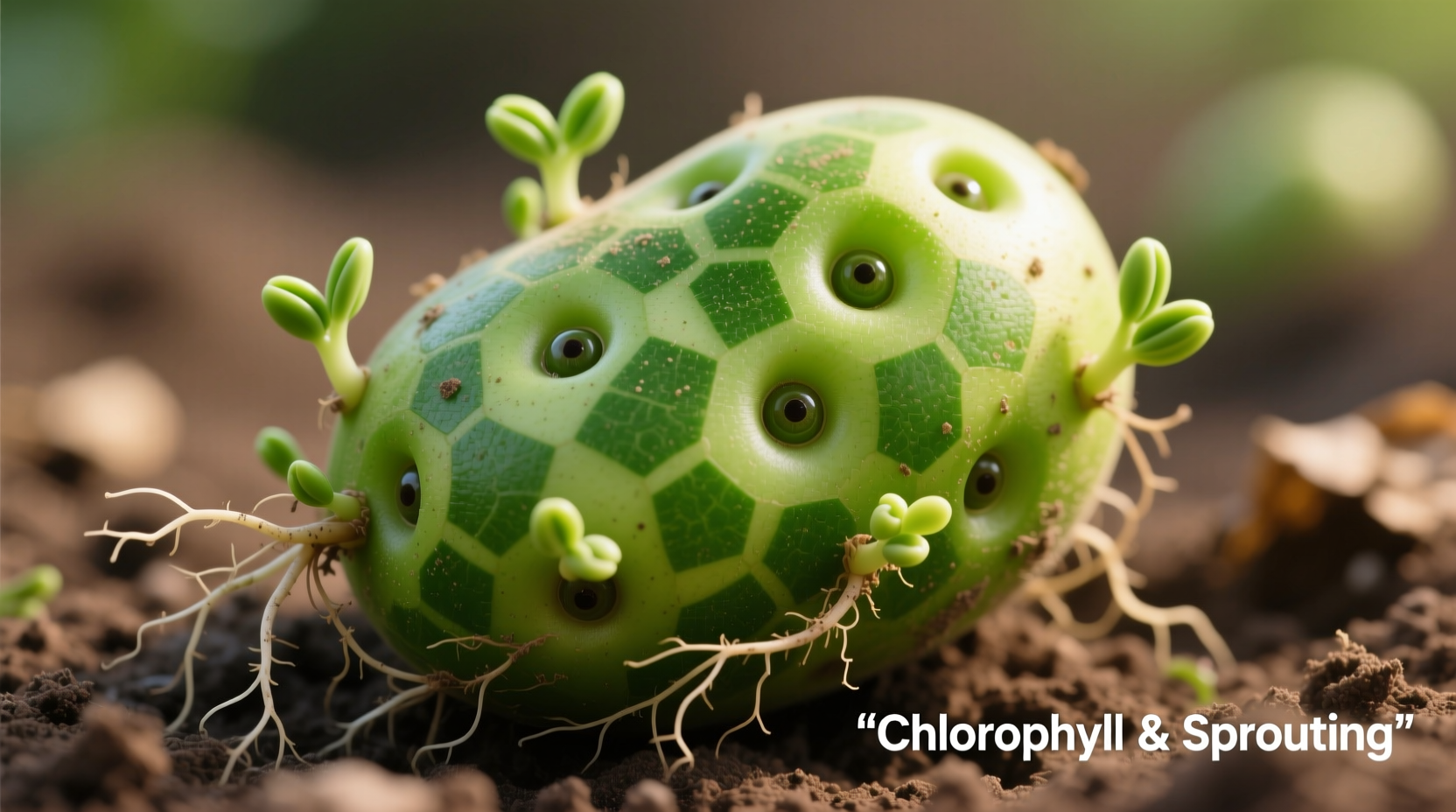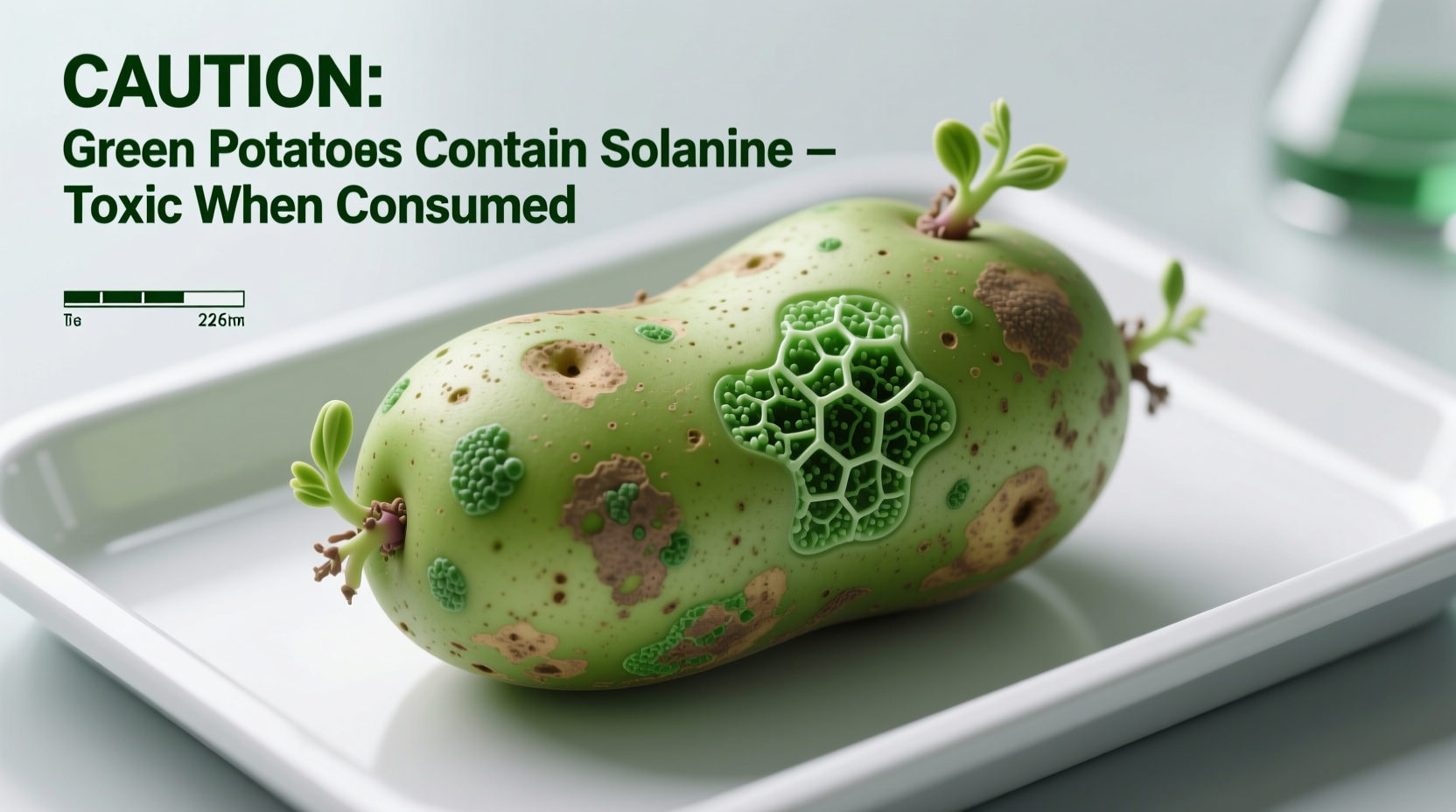Direct Answer: No, it is generally not safe to eat green potatoes. The green color indicates the presence of solanine and chaconine, toxic compounds that can cause nausea, vomiting, headaches, and in severe cases, neurological problems. While small green spots can be cut away safely, extensively green potatoes should be discarded entirely.
The Green Potato Danger: What You Need to Know Right Now
Discovering green spots on your potatoes can be alarming. That unexpected color change isn't just unsightly—it's your first warning sign of potential danger. Understanding why potatoes turn green and how to respond could prevent food poisoning in your household. This guide delivers science-backed information you can trust, with clear action steps to keep your family safe.
Why Potatoes Turn Green: More Than Just a Color Change
When potatoes develop green patches, it's not merely a cosmetic issue. This color change occurs when potatoes are exposed to light, triggering chlorophyll production—the same pigment that makes plant leaves green. While chlorophyll itself isn't harmful, its presence signals something more concerning: increased levels of toxic compounds called glycoalkaloids, primarily solanine and chaconine.
These natural plant defenses form as a protective mechanism against pests and sunlight. The greening process typically begins within 24-48 hours of light exposure, with toxin levels continuing to rise the longer potatoes remain illuminated. Proper storage in complete darkness prevents this chemical transformation.
| Exposure Time | Chlorophyll Development | Solanine Levels (mg/100g) | Recommended Action |
|---|---|---|---|
| 24 hours light exposure | Light green spots | 10-20 | Cut away green areas generously |
| 3-5 days light exposure | Moderate green coverage | 20-50 | Discard if green extends below surface |
| 1+ week light exposure | Extensive green color | 50-100+ | Discard entire potato immediately |
This fact对照 table, based on FDA food safety guidelines, shows how exposure time directly correlates with increasing toxicity. The acceptable solanine limit for human consumption is generally considered to be below 20 mg per 100 grams of potato.
Understanding Solanine Toxicity: The Real Health Risk
Solanine and chaconine aren't destroyed by cooking—they're heat-stable compounds that remain dangerous even after frying, boiling, or baking. These glycoalkaloids interfere with your body's ability to regulate acetylcholine, a neurotransmitter essential for proper nervous system function.
Symptoms of solanine poisoning typically appear 8-12 hours after consumption and may include:
- Nausea and vomiting
- Abdominal pain and diarrhea
- Headache and dizziness
- Fever and confusion
- In severe cases: hallucinations, paralysis, or respiratory failure
Vulnerable populations—including children, pregnant women, and those with compromised immune systems—face higher risks from even small amounts of these toxins. The Centers for Disease Control reports that consuming potatoes with solanine levels above 200 mg/kg can cause serious illness.

Practical Assessment: How to Handle Green Potatoes Safely
Not all green potatoes require immediate disposal. Follow this step-by-step assessment to determine your best course of action:
- Visual inspection: Examine the extent of greening. Small surface spots (less than 15% of the potato) might be salvageable.
- Tactile check: Feel for any sprouting or soft spots. Sprouts contain concentrated solanine and should always be removed completely.
- Cut test: Make a shallow cut into green areas. If green extends more than 1/8 inch below the surface, discard the entire potato.
- Smell test: Fresh potatoes have an earthy smell. Bitter or musty odors indicate advanced spoilage and higher toxin levels.
When in doubt, throw it out. The USDA Agricultural Research Service emphasizes that "there is no reliable home method to remove glycoalkaloids once they've formed in significant quantities." Peeling can reduce solanine levels by 30-40%, but won't eliminate toxins that have penetrated deeper tissue.
Preventing Potato Greening: Storage Best Practices
Prevention is your most effective safety strategy. Follow these evidence-based storage recommendations from university agricultural extensions:
- Store potatoes in complete darkness—never in clear containers or on countertops exposed to light
- Maintain temperatures between 45-50°F (7-10°C)—refrigeration causes unwanted starch conversion
- Keep humidity around 90% to prevent shriveling without promoting mold
- Never store potatoes near onions, which release gases that accelerate sprouting
- Use paper or mesh bags instead of plastic for proper air circulation
Properly stored potatoes can maintain safety and quality for 2-3 months. Check your storage periodically for any developing green spots or sprouts.
Common Misconceptions About Green Potatoes
Several persistent myths about green potatoes could put your health at risk:
- Myth: "Cooking destroys the toxins in green potatoes."
- Fact: Solanine and chaconine are heat-stable and remain dangerous after cooking.
- Myth: "Only the green parts are toxic—just cut them off."
- Fact: Toxins often penetrate deeper than visible green areas, especially in extensively greened potatoes.
- Myth: "Green potatoes are just bitter but otherwise safe."
- Fact: Bitterness indicates high toxin levels that can cause serious illness even in small quantities.
Remember that green color serves as nature's warning system. Ignoring this visual cue risks food poisoning that could land you in the hospital.
When to Seek Medical Attention
If you or someone in your household consumes green potatoes and experiences symptoms, take these steps:
- Stop eating the potatoes immediately
- Drink clear fluids to stay hydrated
- Contact Poison Control at 1-800-222-1222 in the US
- Seek emergency care if experiencing severe vomiting, difficulty breathing, or neurological symptoms
Keep a piece of the potato for potential testing if symptoms develop. Medical professionals can assess toxin levels and provide appropriate treatment, which typically focuses on symptom management as there's no specific antidote for solanine poisoning.











 浙公网安备
33010002000092号
浙公网安备
33010002000092号 浙B2-20120091-4
浙B2-20120091-4